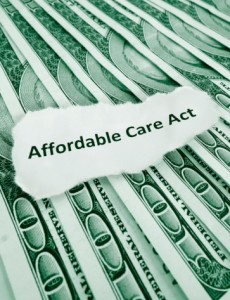By Danielle Capilla, Chief Compliance Officer at United Benefit Advisors
 In the Benefit and Payment Parameters for 2016 Final Rule issued in February 2015, federal agencies included a clarification that annual cost-sharing limitations for self-only coverage apply to all individuals, regardless of whether the individual is covered by a self-only plan or is covered by another kind of plan. Cost sharing refers to out-of-pocket expenses and deductibles that are paid by the beneficiary. In both self-only and other plans, an individual’s cost sharing for essential health benefits (EHBs) may never exceed the self-only annual limitation. The information was only included in the preamble of the Final Rule, and was not included into the regulatory language. As a result, the benefits industry was left unsure of the implications.
In the Benefit and Payment Parameters for 2016 Final Rule issued in February 2015, federal agencies included a clarification that annual cost-sharing limitations for self-only coverage apply to all individuals, regardless of whether the individual is covered by a self-only plan or is covered by another kind of plan. Cost sharing refers to out-of-pocket expenses and deductibles that are paid by the beneficiary. In both self-only and other plans, an individual’s cost sharing for essential health benefits (EHBs) may never exceed the self-only annual limitation. The information was only included in the preamble of the Final Rule, and was not included into the regulatory language. As a result, the benefits industry was left unsure of the implications.
On March 10, 2015, a “Cost-Sharing FAQ” was released, confirming that self-only limitations will apply to each individual regardless of whether the individual is enrolled in a self-only plan or a plan that is not self-only. It appears that this requirement will apply to both high-deductible health plans (HDHPs) and non-high-deductible plans, and is in response to consumer complaints about high deductibles and out-of-pocket limits. This means the limits are applicable to all health plans beginning in 2016. The FAQ includes an example of an HDHP with a $10,000 family deductible, and states that the plan must apply the out-of-pocket limitation on cost sharing at the individual level, even if the amount is below the $10,000 family deductible limit.
Going forward, the family’s cost sharing to the deductible limit can continue to be offered under the HDHP policy, as long as the self-only annual out-of-pocket limitation is applied to each individual on the plan. The annual self-only out-of-pocket limit for 2016 will be $6,850. In addition, an annual out-of-pocket limit will apply to HDHPs associated with health savings accounts (HSAs), but that limit has not yet been released.
For practical purposes, the new limitation acts as an embedded limit, and will apply to all plans starting in the 2016 plan year. The cost-sharing limitation only applies to EHBs, however, employers might find it administratively difficult to parse out EHB costs and non-EHB costs.
For more information on EHBs, download UBA’s PPACA Advisor, “Essential Health Benefits, Minimum Essential Coverage, Minimum Value Coverage: What’s the Difference?”
